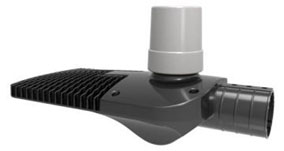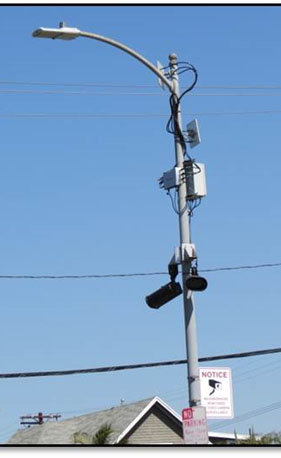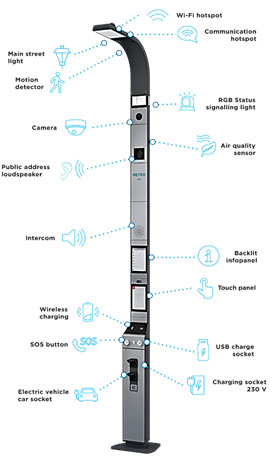When someone says: “We’re doing Smart Lighting for our city," you might need a little more information to know just what they are talking about. As with most things, there are many shades of meaning when it comes to controls and how we define “smart."
The table below captures some of the broad categories that will be discussed further.
|
Basic Control- non-Networked |
Control module has multiple features and functionality but is standalone. |
|
Basic Control- Networked |
Minimal controllability, but networked to receive basic commands |
|
Enhanced Controls- Networked |
Multiple control features, and a network system for two-way communication. |
|
Smart City Network |
Multiple devices beyond lighting, networked together over a wide area. |
Basic Control (modernized)- In the past (and still today), most exterior lighting has a simple photo-sensor that turns the light on at dusk and off at dawn. Lately, we have seen a new generation of sensors that have increased functionality. For example, on at dusk, then down to 50% at midnight, then back to say, 80% at 5:00 AM. That scenario would require a dimmable fixture. But even though they may have GPS, 7-day programing, “Intelligent” circuitry, and can compensate for light loss, they are non-networked and really, just do variations of on/off.
 |
| A modernized photocell has increased functionality. |
Basic Control Networked- Exterior lighting in municipalities and campus settings are sometimes on a lighting-based network. The luminaires can change light level based on a variety of inputs: presence detection of people or vehicles in the area, time of day clocks, ambient light sensors, or manual signals from an administrator. There isn’t much if any data that can be gathered because the communication is just one-way, so it can be difficult to know the status of an individual light or even of the system, without going out to look.
| Many networks use a combination of radio and cellular platforms to wirelessly send signals from the pole module (node), to a local gateway, and then on to a central server of some kind. |
Enhanced Controls Networked - These can do everything that the Basic Control system can do, but the networks usually allow for two-way communication to and from the lighting platform. This allows administrators to determine repair status, energy use, exact location, and other data. Also, other functionality can be added as well like cameras, environmental sensors, local communication, etc.
|
One issue for a “Smart City Network”, is that they often have many different constituents involved. City, county, utility, and even private stakeholders may have a claim to the pole real estate that is critical to a comprehensive network system. |
Smart City- This is a term that we hear a lot and it means different things to different groups. To some it provides a way to track usage of various utilities, to others it is a way to gather demographic data, it can also be a way to provide services and enhanced functionality. Fundamentally, it means multiple devices like cameras, speakers, and even lighting, as well as sensors of all kinds (occupancy, CO2, gunshot detection, temperature, etc.) are attached and powered by the streetlight poles. If implemented haphazardly it can create a cluttered and redundant urban streetscape, but if done in a deliberate coordinated way it can result in a cohesive and efficient urban environment.
 |
 |
| Devices added haphazardly | An integrated Smart Pole |
|
One challenge that the industry faces right now is the lack of a common communication protocol for all the various devices and functions that are possible. Related to this is the need for a seamless transition as people travel from one city to another, or out of a city and into the county. Will everything continue to operate? |
|
If using existing poles, be sure that they can carry the additional weight and wind loads of extra equipment. Many poles cannot. This would mean installing new poles which can be a gamechanger from a cost standpoint. |
All these measures offer energy saving possibilities and enhanced functionality. Be aware that it is not uncommon for an organization to have multiple entities involved on even a single pole. There could be electric utilities, DOT, first responders, as well as private telecoms. So, just be sure that you know what kind of upgrade you are getting and who all the players are.
